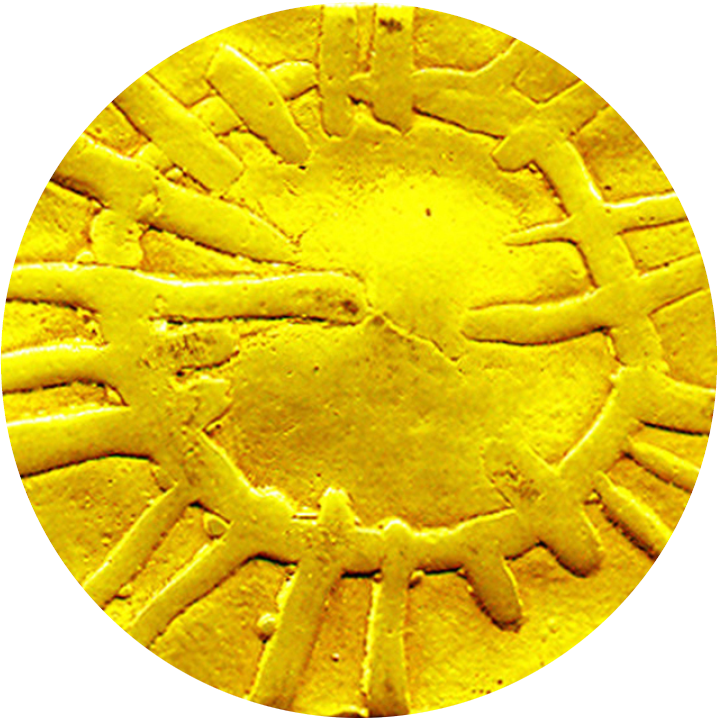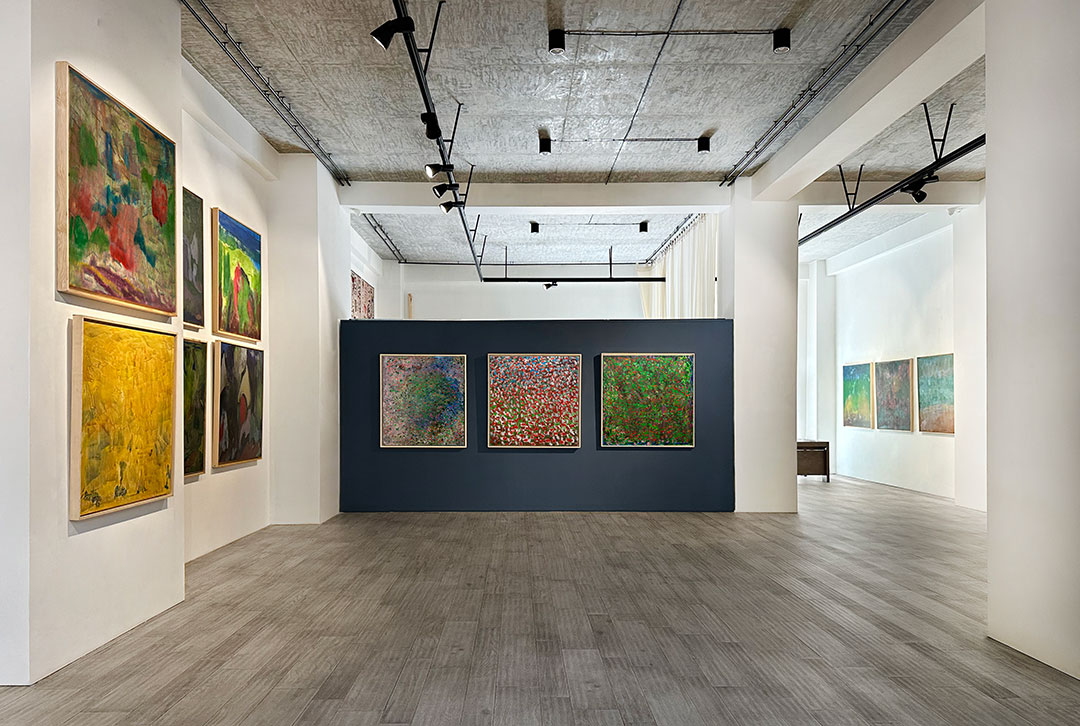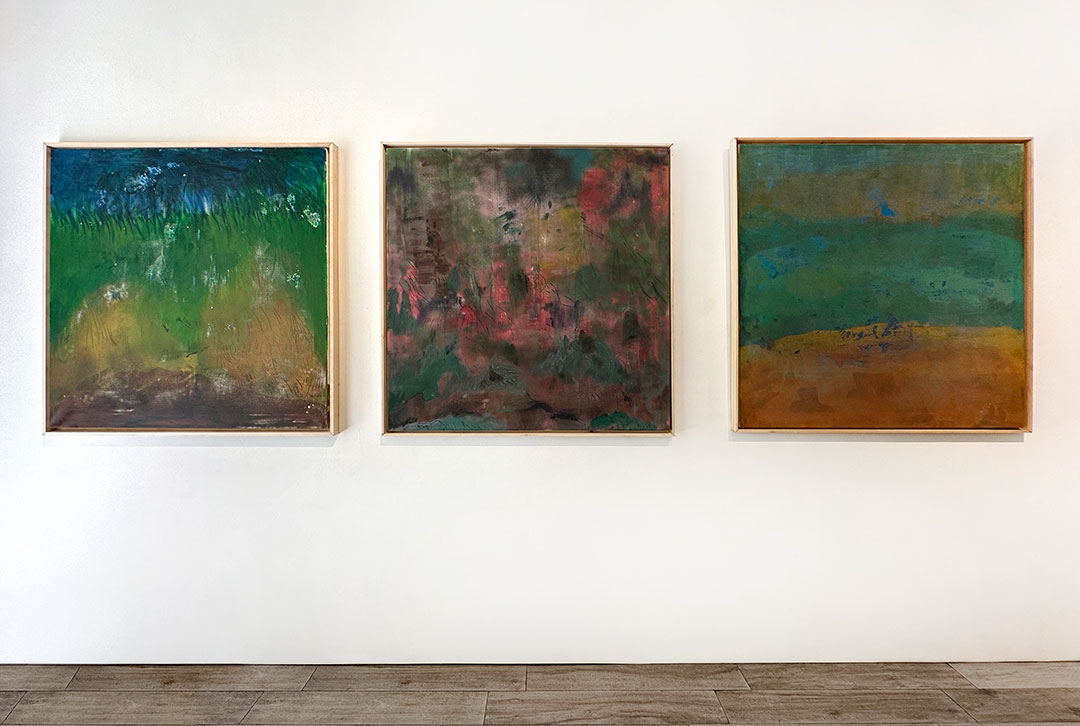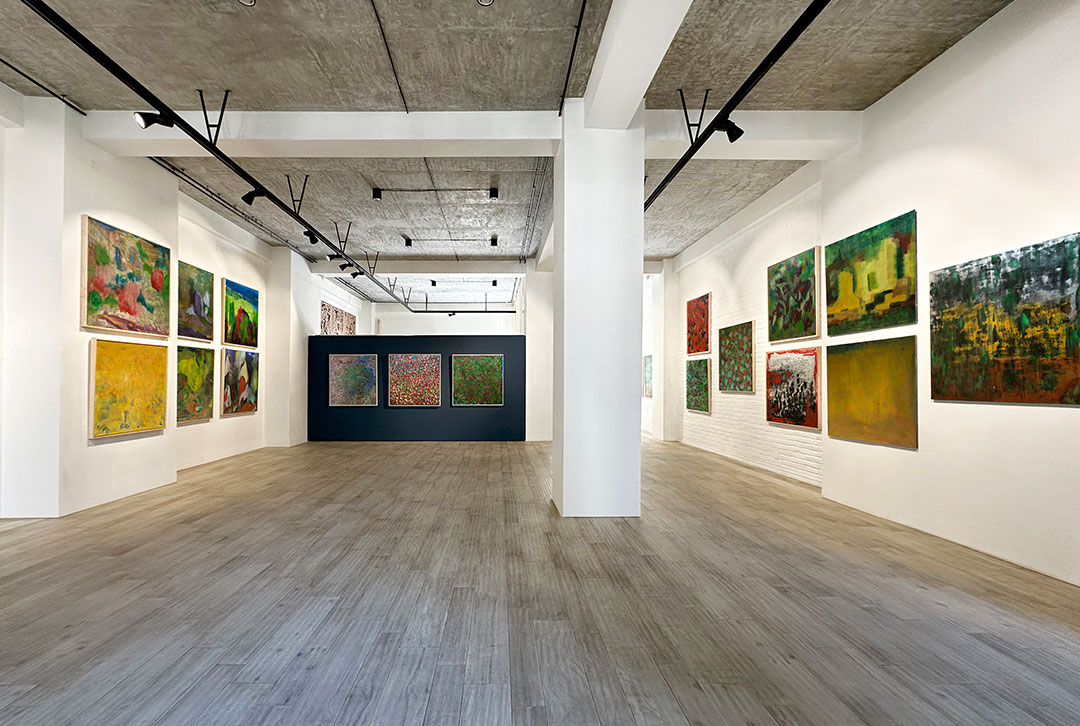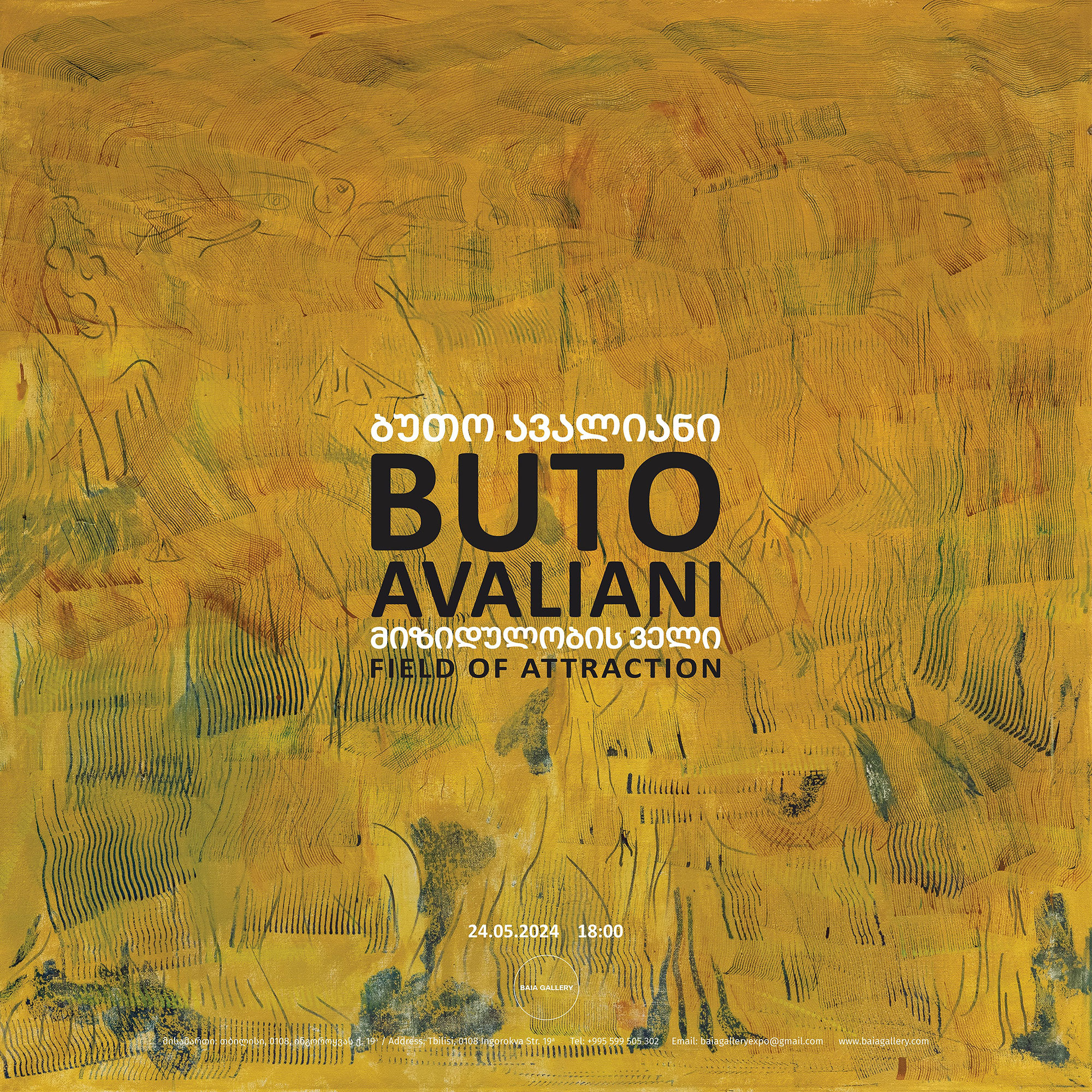Buto Avaliani “Field of Attraction”
May, 2024
19a Ingorokva Street
Since 2000s Buto Avaliani has chosen non-figurative expressiveness as the way of artistic communication. The works created in this period are distinguished by their bright, clear colors and colorful spotting of uneven intensity, which is illuminated by a strong stream of light coming from the depths. The environment created by color moves towards the edge of the work, approaches the viewer, and convinces him of the infallibility of the transcendent, different artistic world behind it. Every time, this effect triggers diverse provoking associations in each of the isolated works be it a plane space created on the surface of the water through dispersed colorful spots, a reedbed floating in the breeze, a dense mass shaped by a stream of the air, a view outside a blurred glass, a wall-like net of fluttering poppies or dandelions that pour down like the rain.
The method of bringing up the light from the depth of the work bears a double meaning. On the one hand, it creates an association with something specific, artistic, and visual, and on the other hand, it refers to content and context-specific things. If we discuss the phenomenon as part of an organic environment, the best match would be the effect of the illuminated sky behind the clouds where the frontal curtain is followed by a warmed-up communicating space – something invisible, occasionally thin, and almost pale, but still completely unachievable, and impenetrable to the eye.
This effect possesses such a scale of generalization that even the canvases that are given location-specific names allow immeasurably wider coverage of emotions both on environmental and personal levels with references to the author and the perceiver.
Buto Avaliani’s drawings unite many examples of interaction with the space through the opposite effects too. The artist applies the usual way of showing the depth of surroundings and for constructing this effect, uses the principle of alternating color spots.
Despite an absolute hegemony of colors, it is the contour that determines the expressiveness of the works. A thin, clearly structured, moderate, and, at the same time, always noticeable, curved line becomes the main organizing element of the colored fabric of the picture. The rhythmic strokes of the contour often create one more additional barrier between the various worlds of the work and the viewers to make the feeling of rhythm more familiar. In Buto Avaliani’s works, linear and spot-like rhythm becomes an integral element of expressiveness. Along with the distant, exclusively visual, external associations with the minimalistic painting, it also creates visual allusions to the music.
Of course, every author and every viewer has his own rhythm of interaction with the universe and with himself probably even merging these two notions together. However, when looking at these works, the color dynamics caused by the rhythm and the saturated emotions become the factors to define the viewer’s mood, which, together with the specific details of space and color perception, shapes the foundation of Buto Avaliani’s individual artistic handwriting.
Tamar Belashvili
Art Historian, PhD
